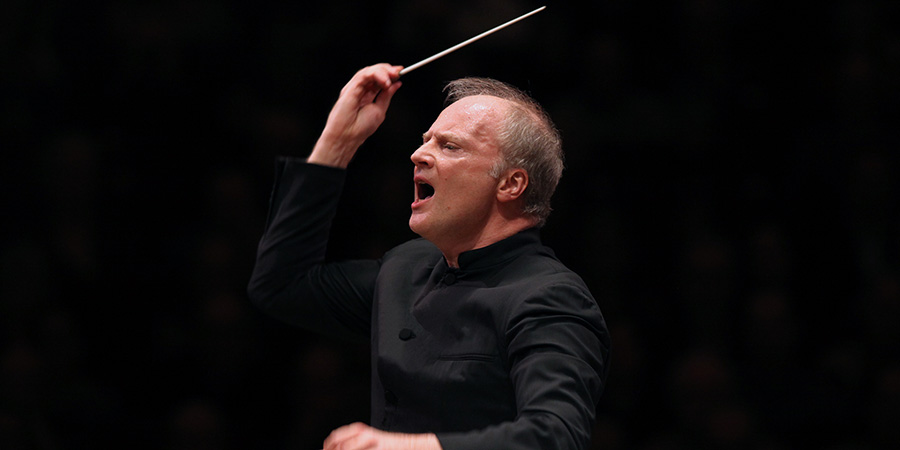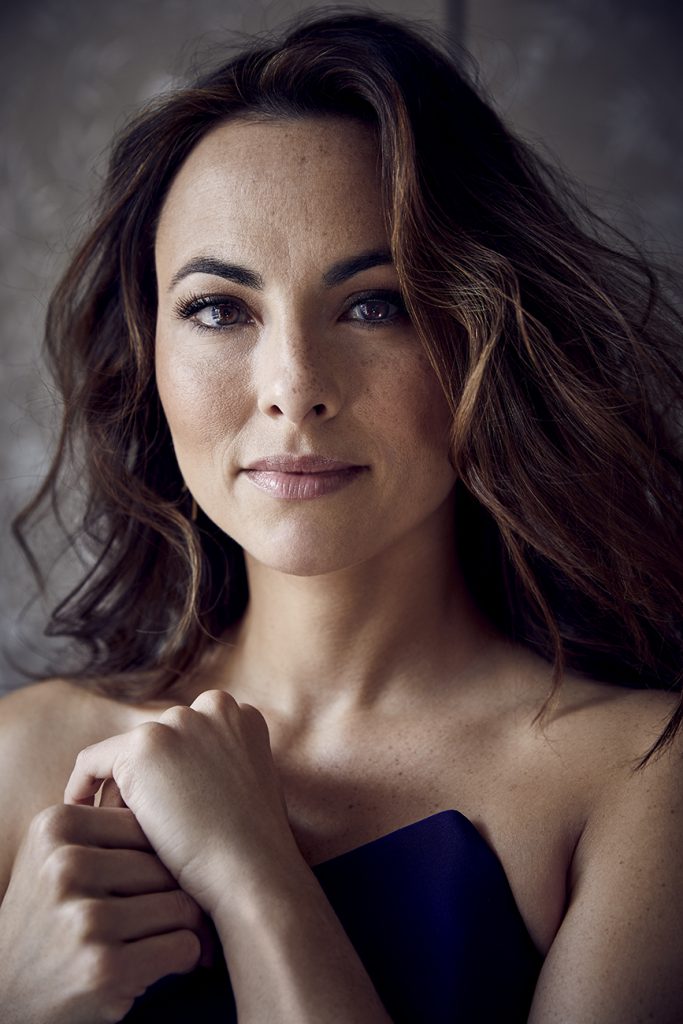Fire and folk music spark final season program for Noseda, National Symphony

Gianandrea Noseda conducted the National Symphony Orchestra in music of Copland, de Falla and Dvořák Thursday night at the Kennedy Center.
Gianandrea Noseda is closing out his second full season at the helm of the National Symphony Orchestra this week. The theme of the program, heard Thursday night in the Kennedy Center Concert Hall, was folk music integrated into classical compositions. Noseda, in his charming way, also spoke about how the composers created music so strongly associated with places that they did not necessarily know all that well.
Aaron Copland’s music for the ballet Billy the Kid has become emblematic of the American West, especially the “Open Prairie” movements that open and close the orchestral suite. Noseda admitted that this was his first time conducting the piece, but he and the musicians drew forth warm nostalgia and bold sweep from these sections. Principal trumpeter William Gerlach gave a glassy sheen to the trumpet solos in the sensuous nocturne of the “Prairie Night.”
In this piece Copland seamlessly fused American folk music with the dissonance and rhythmic drive of European modernism. In the second and third movements the melodies are derived from cowboy songs, among those archived by the American Folklife Center at the Library of Congress. This includes “Goodbye, Old Paint,” a tune now credited to Charley Willis, a former slave who became a singing cowboy and collector of cowboy songs on the trail.
The NSO followed Noseda’s often sinuous, dancing gestures, smoothing over dissonant clashes in the street scene and bringing out percussive attacks in the gun battle. The “Celebration (After Billy’s Capture)” movement was almost a parody of Western music, an insipid saloon tune highlighted with dirty woodwind slides and oompah chords in the piano.
Noseda’s folk music theme might have been stronger with his original programming, centered on Luciano Berio’s Folk Songs. Mezzo-soprano Anita Rachvelishvili had to withdraw for personal reasons, but the celebrated Isabel Leonard stepped in with a change in repertory. Berio’s technicolor orchestration of Falla’s Seven Popular Spanish Songs offered something similar in character, in its use of folk idioms.

Isabel Leonard. Photo: Sergio Kurhajec
At times Berio’s instrumentation was too heavy for Leonard’s slender but beautiful voice, as in parts of “Seguidilla Murciana.” When the orchestration was more transparent, the noble restraint of her sound came through in all its warmth, as in “Asturiana” with its combination of pizzicato strings and distant low woodwinds and brass.
The tender lullaby of “Nana” featured gently cooing clarinets trailing after Leonard’s maternal timbre. The vivid orchestration, full of touches of Spanish percussion, complemented the intense narrative qualities of Leonard’s singing. Leonard’s encore of Agustín Lara’s “Granada,” begun oddly after applause had died out and some listeners had left the hall, was an unexpected delight. Here Leonard threw caution to the wind and embraced this lively song with verve and immediacy.
Dvořák’s Ninth Symphony (“From the New World”) capped off the program aptly, an evocation of the country the composer visited, complete with allusions to the folk and popular music he heard here. Noseda’s interpretation of this familiar piece, last heard from the NSO under Krzysztof Urbański in 2016, was exceptional. In the opening Adagio section of the first movement, he carefully pondered each gloomy phrase and color, making the explosion of the Allegro section more electric.
The NSO’s music director allowed the tempo to expand and contract with natural flexibility, the more dramatic parts driving forward and then easing back gracefully for that moonlit low flute solo in the closing bars of the exposition.
After the chorale-like brass opening of the second movement, the strings created a soft, satiny cushion of sound for the bucolic English horn solo of Kathryn Meany Wilson. This slow movement never got lost in saccharine excess, as Noseda propeled it forward with urgent gestures.
The third movement bubbled frenetically, rhythmically crunchy and precise, with a pleasing tension created by the shadowy appearances of the symphony’s main theme. A few botched horn notes in the closing bars of the second movement were all but forgotten with the blaring power of that section and the other brass in the thrilling finale, taken at a ferocious tempo and with a brilliant sense of attack and scope.
After intermission the NSO bid farewell to two retiring musicians, cellist Janet Frank and violinist Linda Schroeder, whose tenures date back to music directors Howard Mitchell and Mstislav Rostropovich, respectively. Joining the roster are Scott Christian, as assistant principal timpanist and percussionist, as well as cellists Loewi Lin and Britton Riley, bringing the number of Noseda NSO appointments to eleven.
The program will be repeated 8 p.m. Saturday and 3 p.m. Sunday. kennedy-center.org; 202-467-4600




Posted Jun 07, 2019 at 10:38 am by andy bradley
What a spectacular evening. We traveled 1,300 miles for this special event and were not disappointed. Can’t wait until our Next pilgrimage to The Kennedy Center for a NSO performance.